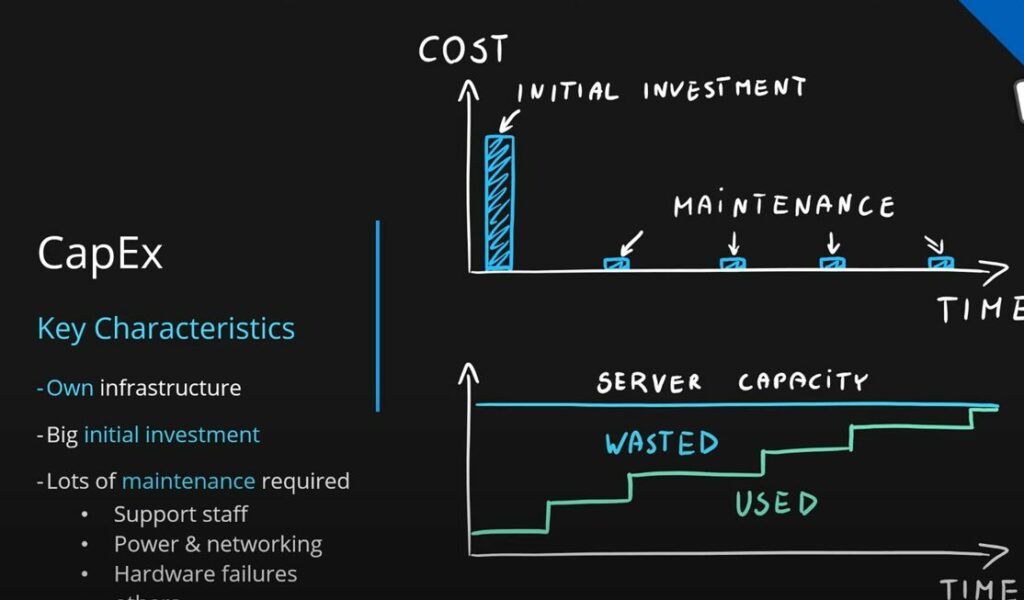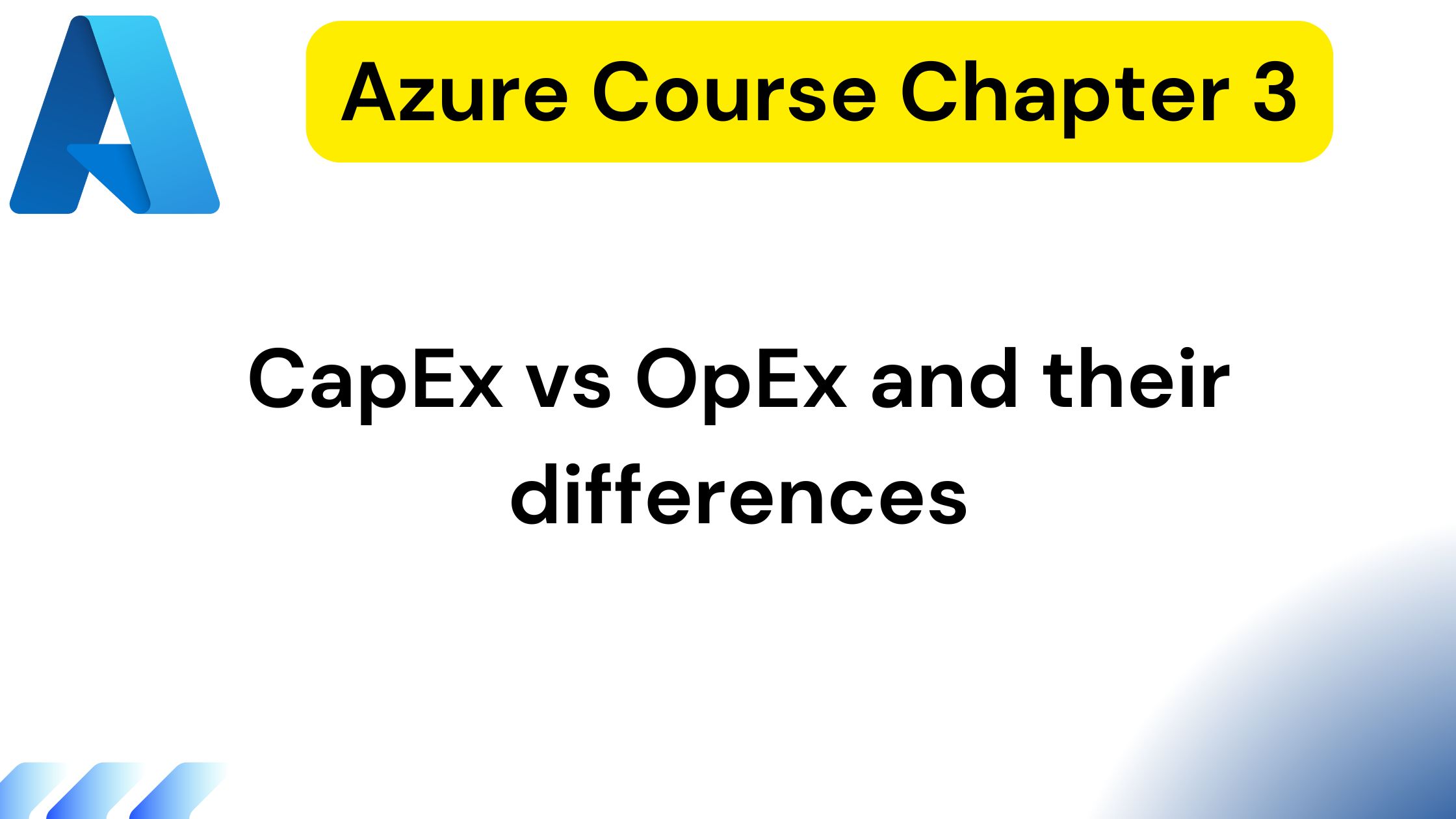The topic for our third chapter is Capital and Operational Expenditures. What are the differences, and which model is used in the cloud and why? Stay tuned!
Learning Objective
The learning objective for the third episode is quite simple. We will learn about capital and operational expenditure, understand the action of spending your company funds, and how your expenditure differs whenever you’re purchasing servers from the cloud or for your on-premise environment.
Capital Expenditure (CapEx)
Let me start with capital expenditure, or in short, CapEx. CapEx basically means buying your own infrastructure. Even though most companies move to the cloud, this model is still very often seen these days.
In CapEx, if you were to draw a diagram showing the cost of running your infrastructure over time, you would see a very big spike at the start. In a typical company environment, when you make a purchase like this, you invest a lot of money. You’ll want to make sure that your investment is future-proof, so you’ll want to buy a bigger server to fit more applications in the future. You may also want to have more modern motherboards so they can be expanded in the future. All of these factors drive the initial investment higher and higher.

However, once the initial investment is made, there’s a very low maintenance cost moving forward. Of course, you will need to pay for the power for those servers, for the networking, for some hardware replacements, and for some support staff to maintain those servers and keep them running. Buying servers in this model means you buy a static capacity of the server, but in real scenarios, your application will use that capacity over time as they grow and more applications are added until they use the full capacity of the server. As you can imagine, all the capacity until that happens is wasted.
Azure Course Part-1 : Cloud Computing important vocabulary
Additionally, because you are managing your own infrastructure, you’ll have a lot of additional maintenance required. While the maintenance cost is small, you will still be required to hire some people to manage those tasks. Then you will need to provide a stable power and networking source for your servers, replace any hardware that fails, and handle all the operational aspects required to manage your own infrastructure.
So, capital expenditure is about committing to resources upfront and making that big initial investment.
Operational Expenditure (OpEx)
In the operational expenditure model, it’s about renting infrastructure and buying services, and the cloud fits perfectly into this model.
Azure Course Chapter 2: Principle of economies of scale
If we take the same example as previously, with increasing usage over time, and if we were to draw the diagram of the cost of our infrastructure over time, the diagram would look much different. This is because you would only be paying for what you use. Your cost is solely based on usage, meaning server capacity always matches what you are using, and therefore, there is no initial investment unless you are actually buying something upfront.

When it comes to maintenance in the cloud, most of the maintenance is actually performed by the cloud vendor. You only need to maintain a small operations team to manage the most important tasks around your infrastructure. Other than that, Microsoft manages everything, and this is included in the price when you’re purchasing services.
Summary of CapEx vs. OpEx
To summarize, let me compare the two:

- Upfront Costs: In CapEx, you have a significant upfront cost. In OpEx, there is none.
- Ongoing Costs: In CapEx, there are low ongoing costs for maintaining your infrastructure. In OpEx, this is solely based on your usage.
- Tax Deduction: This is a tricky topic because it varies from country to country, but generally, in CapEx, you can make deductions over time. In OpEx, since you’re paying for operations every month, you can make tax deductions in the same year.
- Early Termination: This is one of the biggest advantages of the operational model. OpEx allows you to cancel servers at any time. If you no longer need those applications, you simply cancel them. In CapEx, you own the server, so you cannot cancel anything—you just waste more resources because the server is underused.
- Maintenance: In CapEx, maintenance is quite significant because you need to manage your own infrastructure. In OpEx, you only need to maintain a very small operations team.
- Value Over Time: In CapEx, because you’re buying your own infrastructure, the hardware value lowers over time. In OpEx, since you don’t really own any hardware, there’s no change in value. You can simply move to the newest hardware versions of the services at any time with no additional cost.
These are pretty much the most important differences in these two spending models.
Conclusion
Thank you guys for reading! If you like what I do, support the website by subscribing, liking, and commenting, or by sharing this with your friends. If you want to see the next article, bookmark the website. See you there!
